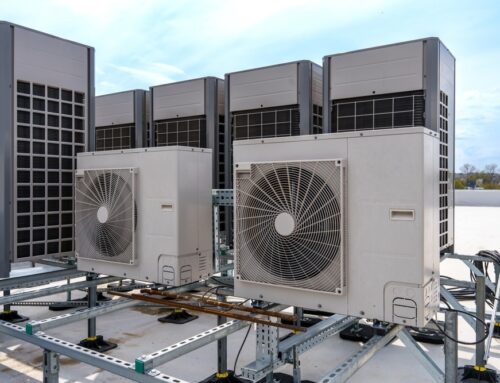As it leaves the compressor,
the refrigerant, now under increased pressure, is much hotter. If you were now to expand the contained refrigerant to its original precompressed volume, it would no longer be hot. It would return to its original temperature. Such a process could not be used for refrigeration. What makes the refrigeration process work is the next stage. The hot, compressed refrigerant enters the condenser, where its temperature is reduced to a level close to that of the air near the condenser.
To lubricate the bearings of a furnace blower motor, it is often necessary to remove the squirrel cage fan from the motor shaft to access the motor, and this can be difficult. If available gear pullers will not fit, make a hardwood wedge to go behind the fan. Cut a slot in the middle of the wedge so that the two tapered fingers can go past the shaft. For stubborn cases, sand and wax the wedge and drive it in hard. Then use a wood dowel and hammer to strike the end of the shaft with the whole assembly elevated off the bench.
Prepare the shaft in advance with penetrating oil if necessary. Disassemble the motor and oil both bearings. If, after reassembly, the motor appears to turn harder than ever, it is because one of the end housings has become bent and the bearings are out of line. It is not very difficult to straighten it and get everything going. When you are finished, you should be able to spin the shaft by hand and it will coast for a while. The condenser has much the same form as an automobile radiator.
The hot refrigerant
enters the condenser where it flows through an assembly of small pipes that have cooling fins. The refrigerant cools down to much closer to room temperature, the process assisted by a fan that blows air across the cooling fins. (Some condensers are water cooled.) When the refrigerant leaves the condenser, it has become much cooler but it is still a liquid and still under pressure. It travels through a copper pipe and enters the refrigerator box through a grommeted hole.
A necessary part of the picture is a small piece of hardware known as the diffuser valve, located in the refrigerant line adjacent to the box wall. The diffuser valve consists of a small orifice, its exact size varying for different types of refrigerant. It sharply restricts the flow of refrigerant so that the pressure drops abruptly. Again, the refrigerant changes phase from a liquid to a gas. At this point, it is as if the box of billiard balls suddenly became larger.
If you are interested in getting a new HVAC San Diego , CA home, there are a lot of new ways to do that. Give Atlas Heating & Air Conditioning Inc a call today at (877) 452-8527, so that we can get the process started for you.




